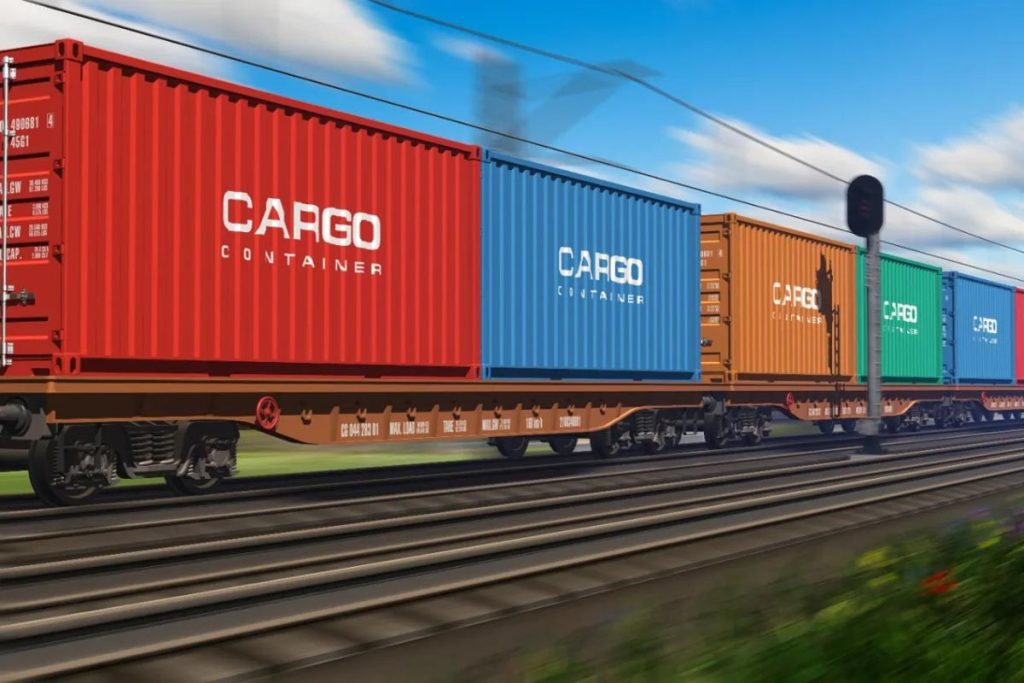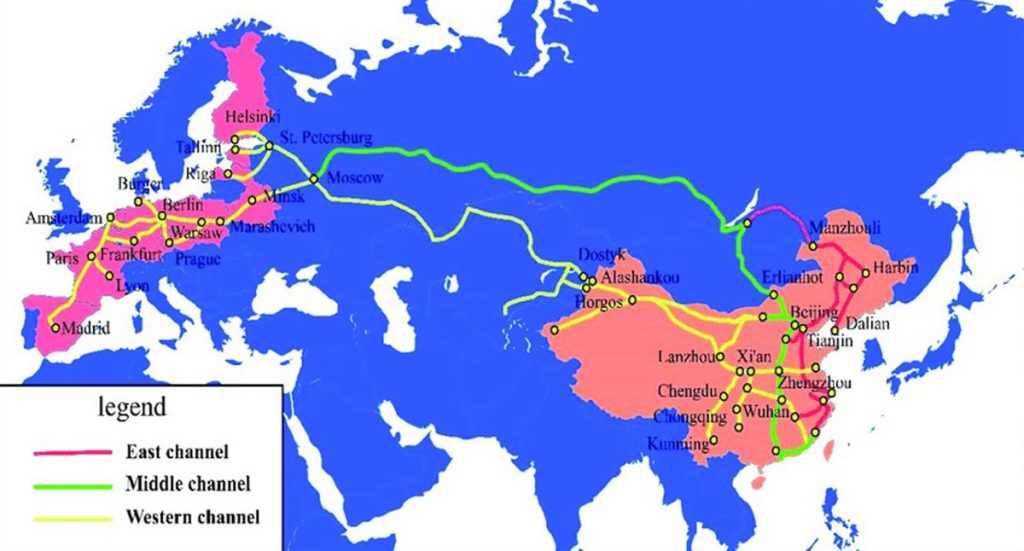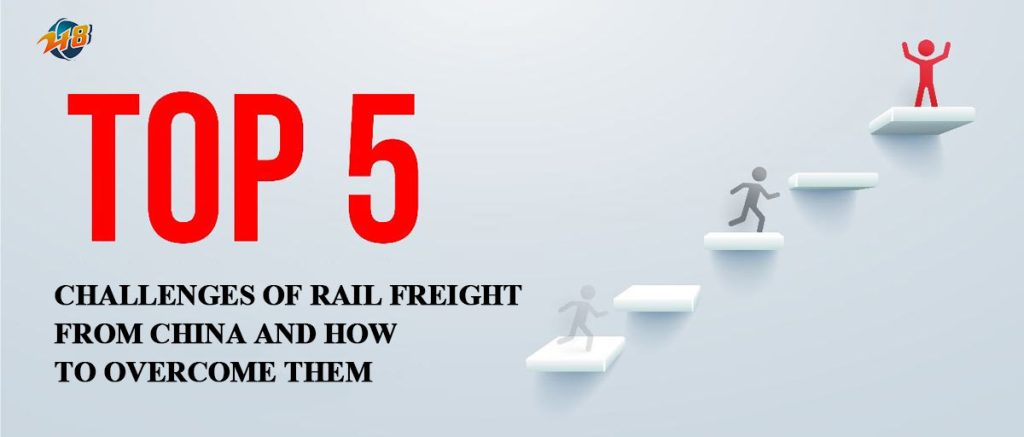In the global logistics and supply chain landscape, rail freight has carved out an essential niche, particularly in trade between China and Europe. Among the various rail services operating in this area, CRExpress stands out as a significant player, connecting major cities in China with key European destinations. This article aims to provide a comprehensive overview of CRExpress, examining its history, operating framework, routes, benefits, challenges, and future prospects for this landmark service.

CRExpress's founding is closely tied to China's broader economic ambitions, particularly the Belt and Road Initiative (BRI), launched in 2013. The BRI seeks to enhance global trade connectivity through infrastructure development, including rail transport. Recognizing the limitations of traditional maritime shipping and air freight, China has launched CRExpress as a fast, cost-effective alternative to moving goods across borders.
The first train under the CRExpress banner departed Yiwu, Zhejiang Province, bound for Madrid, Spain, in 2014. Since then, CRExpress has expanded significantly, establishing itself as a crucial link to the modern Silk Road and facilitating thousands of shipments annually.
CRExpress operates under the auspices of the China Railway Corporation (CRC), the state-owned enterprise responsible for planning and managing railway operations in China. CRC oversees the logistics and coordination involved in running CRExpress services, ensuring compliance with international standards and fostering partnerships with foreign rail operators.
One of CRExpress's distinguishing features is its ability to facilitate intermodal transportation. While rail freight handles the long-distance leg of the journey, CRExpress often integrates other modes of transport–such as trucking and sea freight–for last-mile delivery. This seamless transition reduces transit times and enhances overall logistics efficiency.
Containerization plays a pivotal role in CRExpress operations. Standardized containers make it easier to load, unload, and transfer goods between different transport modes. CRExpress mainly uses 40-foot and 20-foot containers, which can accommodate various types of cargo, from electronics to textiles. The efficiency gained through containerization is one of the key factors contributing to the growth of rail freight.

CRExpress connects many cities across China and Europe through several key corridors. Some of the most prominent routes include:
Yiwu to Madrid: This historic route was the first undertaken by CRExpress and remains one of the busiest. It traverses multiple countries, including Kazakhstan, Russia, Belarus, and Poland, before reaching Spain.
Chengdu to Duisburg: The Chengdu-Duisburg connection serves as a significant link to Germany, allowing access to major European markets. This route highlights the importance of China's western region in global trade.
Zhengzhou to Hamburg: Another vital corridor. The route facilitates trade between central China and northern Europe, connecting Zhengzhou's manufacturing hub to Germany's logistics network.
Shenzhen to London: A relatively new route, the Shenzhen-London connection represents CRExpress's efforts to tap into the UK market, enhancing links between Asia and the British Isles.
Transit times on CRExpress routes vary depending on the specific origin and destination, but they generally range from 12 to 20 days. This is significantly faster than sea freight, which can take up to 40 days or longer. For businesses that prioritize speed and dependability, CRExpress offers an attractive solution.
While rail freight is typically more expensive than sea freight, it is cheaper than air freight, making CRExpress an economically viable option for transporting high-value or time-sensitive goods. Businesses benefit from reduced shipping costs while maintaining shorter delivery times.
CRExpress has established a reputation for reliability, with on-time performance rates significantly higher than those of maritime shipping. The predictability of rail schedules allows businesses to plan inventory and production more effectively, reducing lead times and improving customer satisfaction.
As concerns about climate change grow, CRExpress is positioning itself as a more environmentally friendly alternative to air freight. Rail transport emits fewer greenhouse gases per ton-kilometer compared to trucks and planes, aligning with global sustainability goals. Companies looking to reduce their carbon footprint can strategically leverage CRExpress for greener logistics solutions.
CRExpress provides enhanced connectivity not only between major Chinese and European cities, but also extends to secondary cities through effective intermodal transport solutions. This makes it possible for manufacturers in remote areas to access international markets.

Despite its many advantages, CRExpress faces several challenges that could impact its operations and growth trajectory.
While significant investments have been made in rail infrastructure along key routes, bottlenecks remain at certain junctions. Aging rail networks in some regions, particularly in Central Asia and Eastern Europe, pose challenges to timely delivery. Upgrading and expanding these infrastructures is critical to maintaining and enhancing CRExpress services.
Cross-border rail freight often faces complex customs regulations and lengthy clearance processes. Each country along the route has its own rules, which can lead to delays if paperwork isn't managed efficiently. While initiatives to streamline customs procedures are under way, the bureaucratic nature of international shipping continues to be a major obstacle.
As global logistics evolves, CRExpress must contend with competition from other transportation modes, especially air and sea freight. While rail offers cost and speed advantages, companies may still opt for air freight for extremely time-sensitive deliveries or maritime options for bulk shipments at lower costs.
Geopolitical tensions can disrupt trade routes and affect CRExpress operations. Sanctions, trade disputes, and changing diplomatic relations between countries could impact both the flow of goods and operational efficiency. Ongoing changes in global politics require a flexible strategy to mitigate risks associated with geopolitical uncertainties.
As demand for CRExpress services grows, capacity constraints may arise. Rail networks have limited bandwidth, and increased freight traffic can lead to congestion and delays. Expansion of rail infrastructure and rolling stock will be essential to meet future growth in demand.
To increase transparency and efficiency, CRExpress is increasingly adopting digital technologies. GPS tracking systems allow businesses to monitor their shipments in real time, providing updates on estimated arrival times and facilitating better inventory management. Increased visibility into the supply chain not only improves operational efficiency, but also builds customer trust.
Automation is transforming warehousing and handling operations, leading to increased efficiency and lower labor costs.
Automated Storage and Retrieval Systems (ASRS): These systems streamline the storage and retrieval of goods in warehouses, minimizing human intervention and reducing errors. ASRS enhances space utilization while speeding up order fulfillment processes.
Robotic Process Automation (RPA): Robots are employed in various tasks, including sorting, packing, and loading/unloading containers. RPA reduces the time required for manual handling and reduces the risk of injuries associated with heavy lifting.
Smart Conveyor Systems: Advanced conveyor systems integrate sensors and AI to optimize the movement of goods through warehouses. These systems adapt to changes in demand and improve workflow efficiency.
Automated Inventory Management: Integration of RFID technology allows real-time inventory tracking, ensuring that inventory levels are accurately monitored. Automated alerts help prevent stock outages and overstocking, improving inventory control.
To remain competitive, CRExpress should continue to invest in technological innovations that enhance efficiency and transparency. This includes:
Implementing Advanced Tracking Systems: Using IoT devices and blockchain technology, CRExpress can ensure end-to-end visibility of shipments, allowing customers to track their shipments in real time while also reducing the risk of fraud.
Adopting AI and Machine Learning: These technologies can be used for predictive analytics, helping CRExpress anticipate demand fluctuations, optimize routes based on historical data and weather patterns, and improve inventory management practices.
Building strategic alliances with various stakeholders–such as logistics providers, e-commerce platforms, and government agencies–can significantly strengthen CRExpress's operational framework. Key strategies include:
Collaborating with Local Authorities: Engaging with customs officials and local governments along key transit routes can help streamline border crossing processes, reducing delays tied to regulatory compliance.
Partnering with Technology Firms: Collaborations with technology companies specializing in logistics solutions could facilitate faster implementation of cutting-edge technologies tailored to the needs of CRExpress operations.
As the global focus on sustainability continues to grow, CRExpress should prioritize green initiatives that demonstrate its commitment to environmental stewardship. Recommended approaches include:
Investing in Cleaner Technologies: Exploring options such as electrifying rail lines or using alternative fuels for freight transport could reduce carbon emissions and align with global sustainability goals.
Promoting Eco-Friendly Practices: Implementing practices such as optimizing load capacity and improving energy efficiency in operations can further enhance CRExpress's green credentials, appealing to environmentally conscious customers.
To maintain a skilled workforce capable of meeting the demands of modern logistics, CRExpress should invest in training and development initiatives. Areas of focus could include:
Upskilling Employees on New Technologies: Offering training programs that focus on digital tools, data analytics, and automated systems will empower employees to effectively navigate and leverage emerging technologies.
Leadership Development Programs: Cultivating future leaders within the organization through mentorship and leadership training can foster innovation and drive continuous improvement across all operations.
CRExpress must remain focused on customer-centric strategies to build lasting relationships with clients. Strategies may include:
Providing Tailored Solutions: Understanding specific customer needs and offering customized transportation solutions, whether for small businesses or large corporations, can create a competitive edge.
Improving Communication Channels: Establishing seamless communication channels, such as dedicated account managers or online customer service portals, can enhance customer satisfaction and loyalty.
Given the unpredictable nature of global politics, CRExpress should proactively identify and manage risks through the following measures:
Developing Contingency Plans: Crafting comprehensive contingency plans for potential disruptions caused by geopolitical tensions, natural disasters, or health crises can enhance resilience and ensure business continuity.
Diversifying Trade Routes: Exploring alternative routes and partnerships can mitigate risks associated with reliance on specific corridors, providing flexibility to respond to changing market conditions.

As CRExpress continues to evolve in the dynamic landscape of global trade, it stands at the crossroads of opportunity and challenge. By embracing technological advances, fostering strategic partnerships, and prioritizing sustainability, CRExpress can not only enhance operational efficiency but also position itself as a leader in cross-border logistics.
The future of international rail freight depends on adaptability and innovation. With a proactive approach to overcoming obstacles and seizing opportunities, CRExpress has the potential to redefine the logistics sector, ensuring it meets the growing demands of a rapidly changing world.
Through continuous improvement and a commitment to customer satisfaction, CRExpress can strengthen its role as a vital link to the modern Silk Road, facilitating trade, fostering economic ties, and contributing to sustainable development well into the future.